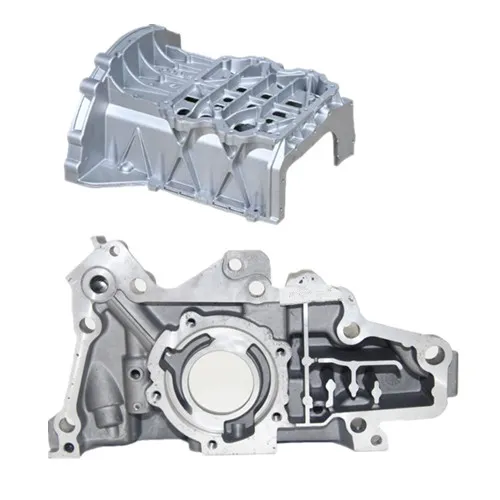Mobile:+86-311-808-126-83
Email:info@ydcastings.com
An Overview of Stainless Steel 1.4308 Properties and Applications in Various Industries
Understanding Stainless Steel 1.4308
Stainless steel is a versatile and essential material in many industries, renowned for its durability, corrosion resistance, and aesthetic appeal. Among the various grades of stainless steel, 1.4308 is particularly noteworthy. It is a low-carbon austenitic stainless steel primarily known for its excellent toughness and stability even at elevated temperatures. This article delves into the properties, applications, and advantages of stainless steel 1.4308.
Composition and Properties
Stainless steel 1.4308 belongs to the 300 series of stainless steels and is designated as AISI 308. Its primary components include chromium (20-22%), nickel (10-12%), and a maximum carbon content of 0.08%. The high chromium content provides the material with remarkable corrosion resistance while the nickel enhances its ductility and toughness. The low carbon content is a significant feature, as it helps minimize the risk of carbide precipitation, leading to improved weldability and intergranular corrosion resistance.
In terms of mechanical properties, 1.4308 exhibits a yield strength of around 210-290 MPa and an ultimate tensile strength of approximately 505-750 MPa. The elongation is typically between 40 to 50%, which indicates good formability. The toughness at low temperatures is another critical attribute, making it suitable for applications in cooler environments.
Applications
Due to its properties, stainless steel 1
.4308 finds use across various sectors. One of its primary applications is in the food and beverage industry, where hygiene and resistance to corrosion are paramount. Its non-reactive nature ensures that it does not alter the taste of food or beverages, making it a preferred choice for processing equipment, storage tanks, and piping systems.Another prominent application is in the chemical industry, where resistance to chemicals and high temperatures is essential. Components such as reactors, heat exchangers, and valves made from AISI 308 stainless steel help manufacturers ensure their systems operate efficiently and reliably.
Moreover, 1.4308 is also used in the construction industry, particularly for architectural applications where aesthetic qualities are important along with durability. Items like railings, cladding, and various structural supports often utilize this grade of stainless steel to achieve a combination of visual appeal and structural integrity.
stainless steel 1.4308

Advantages
The advantages of stainless steel 1.4308 can be summarized in several key points
1. Corrosion Resistance One of the standout features of this stainless steel is its ability to resist oxidation and corrosion in various environments. This property significantly extends the lifespan of equipment and structures made from it.
2. Weldability Its low carbon content enhances its weldability, allowing for the effective joining of materials without compromising structural integrity. This trait is particularly beneficial in the construction and fabrication of complex designs.
3. Aesthetic Qualities The bright, shiny surface of 1.4308 stainless steel offers an attractive finish that does not tarnish, making it ideal for visible applications.
4. Temperature Resistance This grade maintains its mechanical properties at elevated temperatures, making it suitable for applications where heat resistance is a requirement.
5. Ease of Maintenance Stainless steel is relatively low maintenance compared to other materials. Cleaning and upkeep are straightforward, frequently requiring only soap and water to maintain its finish.
Conclusion
Stainless steel 1.4308 presents a robust solution for numerous applications across various industries. Its balance of mechanical strength, corrosion resistance, and aesthetic appeal makes it a preferred choice among manufacturers and builders. As sustainable and high-performance materials continue to gain importance in modern engineering and design, the relevance of grades like stainless steel 1.4308 is likely to bolster, making it a material worthy of consideration in any project requiring durability and reliability. Understanding its properties and potential applications can lead to more informed decisions in material selection, ultimately fostering innovation in various engineering sectors.
-
Why Should You Invest in Superior Pump Castings for Your Equipment?NewsJun.09,2025
-
Unlock Performance Potential with Stainless Impellers and Aluminum End CapsNewsJun.09,2025
-
Revolutionize Your Machinery with Superior Cast Iron and Aluminum ComponentsNewsJun.09,2025
-
Revolutionize Fluid Dynamics with Premium Pump ComponentsNewsJun.09,2025
-
Optimizing Industrial Systems with Essential Valve ComponentsNewsJun.09,2025
-
Elevate Grid Efficiency with High-Precision Power CastingsNewsJun.09,2025











